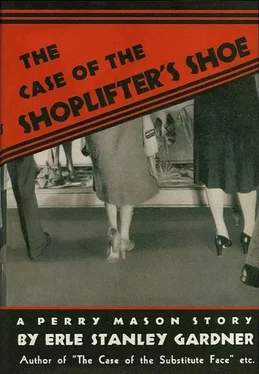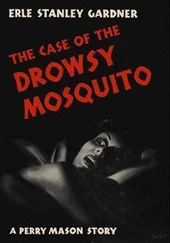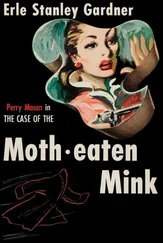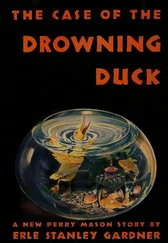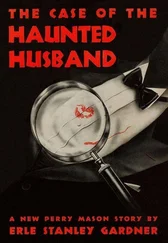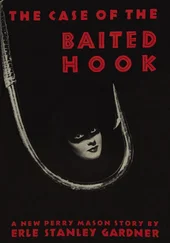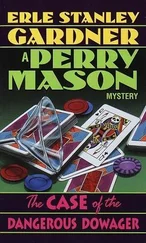“I think so,” Mason said. “I’d hoped, of course, I could keep them from definitely establishing that it was your handbag. Now, I’m having to fall back on my second line of defense.”
“Well,” she said, weighing the issues as judicially as though her own fate had not been involved, “it seems to me that you’re getting out of the frying pan and into the fire.”
“Well,” Mason observed, smiling, “that at least will be a change of scenery.”
She thought for a moment, then said, “Do you know, Mr. Mason, I believe that if I concentrated real hard, I could get some glimmerings of memory about what took place...”
“Don’t concentrate, then,” Mason said.
“Why? Don’t you want me to remember?”
“I don’t think it will be necessary.”
“Do you think it would hurt anything?”
“I’m sure I don’t know,” Mason told her. “So far, I’m proceeding simply according to logic. But when we check up on events, it’s sometimes startling to find how illogical events actually are.”
“Well,” she told him, “you know your own business best, but I don’t think there’s a single person on that jury who believes that the man from the homicide squad got those bullets mixed up. He’s too positive, and he’s had too much experience.”
“Yes,” Mason said simply.
“Now, what do you mean by that?” she asked.
Mason grinned. “That he’s too positive,” he said, “and that he’s had too much experience.”
Sarah Breel laughed. “Promise me,” she said, “that you’ll be careful.”
Mason patted her hand. “Leave the worrying to me,” he told her. “I believe that was the bargain, wasn’t it?”
“No,” she said with a smile, “Virginia took over the worrying concession.”
“That’s right,” Mason admitted, “perhaps she’s worrying now. Who knows?”
Sarah Breel flashed him a swift glance of pointed interrogation. But Mason, apparently intending his last remark merely as a pleasantry, moved back to the counsel table and started arranging his papers.
Court reconvened at the end of five minutes, and Carl Ernest Hogan, the ballistics expert, stepped forward and said, “Let the ·record show that, purely for the purpose of evidence in this case, I submit for inspection a certain revolver numbered R, nine-three-six-two. And the record can also show that I’m not going to let that gun out of my possession.”
“That’s quite fair,” Mason said. “I understand that this weapon is being held as evidence in connection with the homicide of George Trent.”
“That’s right,” Carl Ernest Hogan said.
“Lieutenant Ogilby, I am going to ask you if you have ever seen this gun before?”
“I have.”
“Is that the gun which Virginia Trent had with her on the Saturday afternoon in question?”
Lieutenant Ogilby snapped open the cylinder, spun it swiftly and said, “It is.”
“Is that the gun which was fired by her at that time?”
“Yes, sir.”
Mason said to Sampson, “You may cross-examine.”
Sampson jumped to his feet, as though fairly tearing into the witness. “You say that is the same gun,” he thundered, “and yet you have given it only a casual inspection. You haven’t even looked at the number on the gun.”
“No, sir,” Lieutenant Ogilby said. “I didn’t make my identification from the number on the gun.”
“The company which manufactures this revolver makes thousands of absolutely identical revolvers, made by machinery, and alike in every respect, save only that, for the purposes of identification, each one of those revolvers is given a number by the manufacturer. Isn’t that right?”
“Yes, sir.”
“Then how can you presume to recognize this gun and differentiate it from the thousands of other identical guns which have been made, unless you look at the only positive mark of identification, to wit, the number stamped on the gun by the manufacturer?”
Lieutenant Ogilby smiled. “You’ll pardon me, Mr. Sampson,” he said, “but I happen to know firearms. It’s a hobby of mine. While you are correct in your statement that these firearms are absolutely identical when they’re manufactured, just as automobiles are identical when they leave the factory, before guns have been in use very long, they take on certain individualities. For instance, on this gun, the front sight was a little high. Miss Trent shot low with it. I tried to get her to take a coarse sight, but she couldn’t understand doing that, so I filed the sight down myself. The file marks are quite visible on this sight. Moreover, in order to absolutely check so there could be no question of doubt, I went out to the place where we had done our target shooting, at the request of Mr. Mason, and picked up the empty shells which had been ejected from the gun when I reloaded it.”
“What have the empty shells got to do with it?” Sampson asked sneeringly.
“Simply this,” Lieutenant Ogilby said. “Before the science of ballistics learned that bullets fired from a gun could be identified by marks made by the rifling, the only method of determining whether a shell had been fired from a given gun was to center the firing pin on the percussion cap. Firing pins, theoretically, strike in the center of the percussion cap. Actually, they do no such thing. Furthermore, in the course of use, each firing pin develops little peculiarities of its own. There is not only the position of the indentation made by the firing pin on the percussion cap, but there are also little irregularities in that impression which are distinctive. I satisfied myself that each one of those shells had been fired from this same gun.”
“You didn’t have the gun to compare those shells with,” Sampson said.
“No, but I had a photograph of the cylinder of this gun which was furnished me by a newspaper, and which I have every reason to believe was authentic. But just a minute, Mr. Sampson, if you wish, I’ll make that check right here and now.”
He produced a discharged shell from his pocket, took the gun from Hogan, opened it and said to Hogan, “You’re an expert. You can see for yourself.”
Hogan leaned forward, and Sampson said, “I object to that form of examination. Let the witness answer the question so the jury can get it.”
Mason grinned and said, “He’s your own expert. Take him away if you don’t want him there.”
Hogan stepped back, looked at Sampson, and nodded almost imperceptibly.
“Just step up to the jury,” Mason said to Lieutenant Ogilby, “and show them the marks made by the firing pin on the discharged shell which is in the cylinder of the weapon, and the discharged shell which you hold in your hand and which you picked up where you had been engaging in target practice.”
Lieutenant Ogilby stepped over to the jury rail. The jurors crowded forward. The lieutenant pointed out the points of similarity made by the mark of the firing pin.
Sampson engaged in a brief whispered conversation with Hogan, the firearms expert of the homicide squad, and then said lamely, “That’s all. There are no further questions on cross-examination.”
His head was in a whirl. Facts shot through his mind in a confused procession. He tried to arrest them long enough to follow his ideas to their logical conclusion, but the confusion was too great. He felt as though he had been standing at the local station in a subway, watching express trains thundering past, and trying ineffectively to stop them. He was aware that people were looking at him, aware that Judge Barnes was frowning in puzzled concentration, that Mason was smiling, that the jurors were staring. He felt mental vertigo amounting almost to nausea. There was a dry taste in his mouth.
Читать дальше
